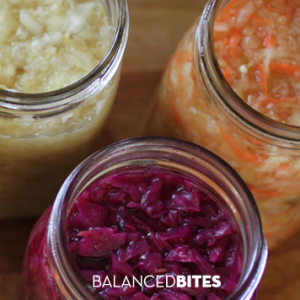RAWrrrrrrsome!
Sunday, March 11, 2012
Don’t forget Daylight Saving starts today! Time to Spring ahead!
Mobility:
Jog 800 meters
Tricep mash, 1 minute
Pigeon on box, 1 minute each
Warm-up:
2 Rounds:
10 Wall squats
5 Strict Pull-ups
30 second Handstand hold
With a loaded barbell, perform 3 rounds of the complex:
5 Deadlifts
3 Hang Power Cleans
2 Power Cleans
1 Jerk
**Increase load each round
Load up and practice rope climbs.
Workout:
Complete as many rounds as possible in 10 minutes of:
185 pound Clean and jerk, 2 reps
15 foot Rope climb, 1 ascent
Cool down:
15 Ghd Back extensions
15 Ghd Hip extensions
15 Ghd Back-hip extensions
The ‘stache.
Sauerkraut has become the new craze in the paleo world. Every blogger in town has been raving about its remarkable gut-healing probiotic qualities. Probiotics, to me, always meant yogurt and kefir. Since I’m dairy-free, those items are out of the question. The more I read about the benefits of raw and fermented foods, the more I realized that, I TOO, wanted to make sure that my body was absorbing every last nutrient it could from the clean foods I was already eating! Before you run out to buy some heads of cabbage to make your own batch of sauerkraut, let’s talk a little bit about gut bacteria and why they are important…
Mark’s Daily Apple so nicely explains the history of the gut in 5 sentences (genius)…
“Ancient human guts were exposed to new strains of bacteria with new digestive enzymes all of the time. Clearly, humans evolved in a bacteria-rich environment. The food we ate, the ground upon which we slept, and even the water we drank sent a steady stream of microbial diversity into our bodies. Today’s sterile, refined fare is absent bacteria – good or bad. We irradiate, we pasteurize, we sterilize, and we roast everything that goes into our mouths.”
I’m not saying you should drop everything now and become a strict raw-foodist, but taking into consideration the health benefits of raw and fermented foods is completely worth it. Moving on…
Your gut is full of bacteria. Majority of it is so called ‘good bacteria’ or probiotics. While beneficial bacteria reside throughout our bodies, gut bacteria may be the most important of all. A substantial part of our immune system depends on these healthy flora. Gut flora is responsible for breaking down everything that we put into our mouths. If you don’t have enough good bacteria lining your stomach, things get messy, your tummy gets pissed and leaky gut happens. When leaky gut occurs, your body misses the chance to absorb nutrients from the good foods you are putting in so much effort to cook and consume in the first place. Yikes, what a waste!
(To nerd out of the topic of leaky gut, click here. Also note, you don’t have to have gut symptoms to have a leaky gut. Leaky gut can manifest as skin problems like eczema or psoriasis, heart failure, autoimmune conditions affecting the thyroid (Hashimoto’s) or joints (rheumatoid arthritis), mental illness, autism spectrum disorder, depression and more.)
One of the best ways to ensure that you have fantastic gut flora and are getting everything you can out of the nutrient dense foods you are consuming is by eating fermented foods like sauerkraut. It’s dairy free and full of fun bacteria bugs and enzymes that will restore the mucosal lining in your gut. The inside of your stomach will be in heaven, promise.
Sauerkraut contains a laundry list of beneficial bacteria. You can easily purchase it in the raw foods section of most grocery stores (Whole Foods has the largest selection) or you can make a batch of your own the next time cabbage comes in the weekly market order. There are many different flavors depending on what your taste buds enjoy. Some are spicy, some are plain. Farmhouse Culture is a fantastic brand. It’s super organic, clean, has no added sugar and it comes in different flavors.
Or… if you’re the adventurous type, you can make your own batch. It’s the popular thing right now in the paleo world so finding a recipe that YOU like is super simple. Below is one stolen from one of my favorite paleo blogs, Balanced Bites, by Diane Sanfilippo. The process takes at least two weeks, but is well worth the wait from what I hear.
As always, if you have any questions please don’t hesitate to post your comments/questions.
-Jamie
Raw Sauerkraut: Roasted Jalapeño & Garlic
Yield: Approximately 32 servings.
(flavor variations for a plain and other versions are listed at the end of the recipe)
NOTE: You’ll need to have a large pot or mixing bowl, 2 wide-mouthed 32oz sterilized glass jars, and two pinch bowls or shot glasses that fit inside the top of the glass jars on-hand for this recipe. If you have a sauerkraut crock or other fermentation containers you won’t need the glass jars.
Yield: 2, 32-oz jars.
Ingredients:
- 1-2 jalapeño peppers
- 1 large head of green cabbage, sliced into thin strips (set large outer leaves aside)
- 1 Tbsp unrefined sea salt (Redmond Real Salt)
- 2 large carrots
- 2-4 cloves of garlic (2 if large, 4 if smaller)
- Black pepper to taste – a few grinds will work
Preparation:
- Place the jalapeño(s) over an open gas flame or on a grill, turning every minute or so until the skin is blackened and blistered. Remove the pepper from the heat and peel the skin off under cool running water.
- Slice the peeled pepper(s) and remove the seeds to your taste. The more seeds you leave, the spicier the recipe will turn out. Set the peppers aside.
- Place 1/3 of your sliced cabbage into your large bowl and sprinkle 1 Tsp of the salt over it. Using your hands squeeze and stir the cabbage until some of the water content begins to come out of it and the cabbage seems wet.
- Repeat this process adding the remaining cabbage and salt 1/3 at a time to the bowl. Squeeze and stir the mixture until you can see water running off of the cabbage. This will take time and elbow-grease, so be ready to get your hands involved.
- Peel and then grate the carrots on a box grater or in a food processor.
- Peel and then finely slice the garlic.
- Add the shredded carrots, garlic, jalapeños and black pepper to the mixture and combine with your hands.
- Fill the 2 jars evenly, pressing the mixture down so that water releases and raises above the line of the vegetables. Continue doing this until the jars are filled with about 2? of space remaining at the top.
- Wedge the large outer leaves of the cabbage you had set aside into the top of the jars so that the mixture is underneath it and the water level raises above the flat cabbage leaf. You will want to use a small pinch bowl or a shot glass as additional weight to keep the mixture down.
- Set the filled jars aside on a cookie sheet or in any other large, flat container with an edge so that if there is any spillover you keep it contained. Set the jars/cookie sheet aside in a secure place at room temperature where they will not be disturbed.
- Check on your raw sauerkraut every day or two to make sure that the water level has remained above the vegetables and that no vegetables are touching the surface and coming into contact with air. The fermentation process happens under water, so if you do see anything touching the surface, use a clean spoon to remove it. You may also see some growth or mold form around the top of the liquid- this is normal but it’s best to remove it when you see it. If you need to add liquid to the jars, add some fresh water to make sure that everything is below a water line. The weights should a lot help with this.
- After about one week, remove the weight and top piece of cabbage from the kraut, remove a thin layer of the top of the kraut and give it a taste. It should be sour but probably not “there” yet. Allow the sauerkraut to sit for at least 2 weeks and taste it periodically as you wish to check on it.
- Once the sauerkraut tastes as you like it, place the lid on it and store it in the refrigerator. It will last for several months while refrigerated and will not continue to ferment further.
Variations:
- Plain raw sauerkraut: use just cabbage and salt.
- Traditional raw sauerkraut: use cabbage, salt and caraway seeds (about 1Tbsp for this recipe).
- Sweet and tangy sauerkraut: use red cabbage, salt, raisins or currants, cinnamon and fennel seeds.
- Seasonal fall sauerkraut: use cabbage, salt, green apples, sliced fennel and leeks.
- FODMAP-free carrot-kraut: use just carrots in place of cabbage and salt.

















